Recent Storm Damage Posts
What To Expect from a Storm Restoration
7/20/2022 (Permalink)
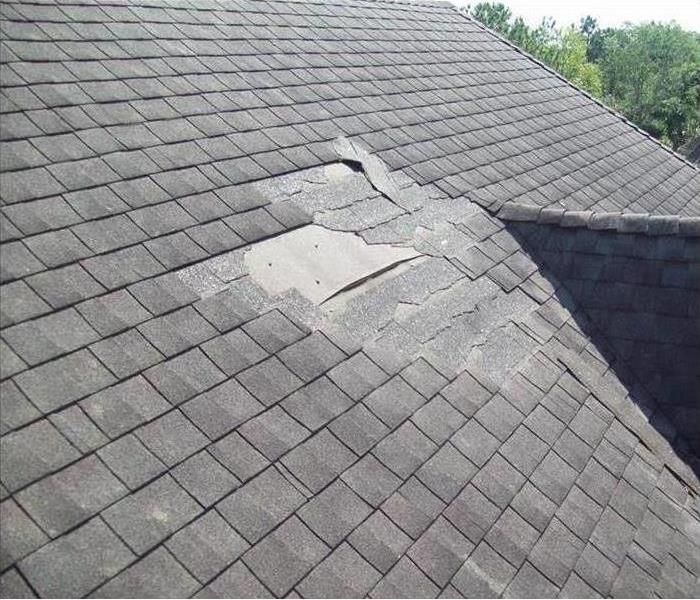 Flooding may occur in basement areas while the roof has loose shingles from the wind.
Flooding may occur in basement areas while the roof has loose shingles from the wind.
Things You Can Expect To See During a Restoration
When your home experiences Ballard, WA, flooding, you may come to realize that the cleanup job will be different from normal repair work. Fortunately, a local storm damage restoration service can be there to help. From damage location to various repair needs, these professionals can soon have your home looking “Like it never even happened.” Here are a few things you can expect to see during a restoration.
1. Multiple Damage Types
A heavy storm can leave you dealing with multiple damage types in your home. Water damage can come from leaks or flood issues, and mold damage can appear if water isn’t cleaned up quickly enough. Storm winds can cause problems and sharp drops in temperature can cause pipes to freeze. In some cases, there may even be damage caused by hail.
2. Damage in Multiple Locations
A storm has the ability to cause damage in multiple locations simultaneously. Flooding may occur in basement areas while the roof has loose shingles from the wind. This is why if you believe your home has sustained storm damage it’s important to inspect the entire property.
3. Various Repair Needs
A storm can leave various repair needs around your home from fixing loose shingles on the roof to cleaning up flood damage. This can quickly become a much larger scale repair job than you may be used to. Many restoration services have the ability to handle various types of repair work, and with a full crew, many jobs can be completed at the same time.
A restoration service can clean up any flooding and related damages after a storm hits your home. They will also be able to handle the variety of repair needs that storm damage can bring above and beyond a normal repair job. From damage types to damage location and repair type, These professionals should be able to take care of any issues and have your home looking “Like it never even happened.”
3 Important Actions To Take If Your Flight Is Canceled
5/22/2022 (Permalink)
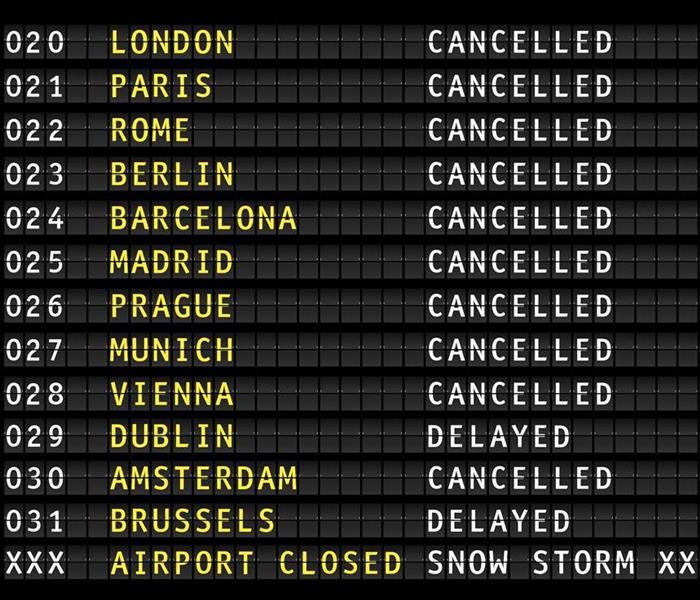 A canceled flight can derail your plans, especially if you are heading home.
A canceled flight can derail your plans, especially if you are heading home.
Storm Tips
A suddenly canceled flight due to a dangerous storm is a stressful situation, especially if you hoped to fly back to your home in Wallingford, WA. Despite the impact of the situation, you will need to act fast and adapt to ensure you get home quickly and safely. Keep the following storm tips in mind during a surprise cancelation.
1. Contact the Airline Company Fast
Once you find out about the cancelation, you should not waste time contacting the airline company since you will not be the only one searching for answers and scheduling a new flight. Ideally, you should read about the company's cancelation policies before making your trip plans, but a quick online browse can clear your doubts before communication. If the gate agent's line is long, call the company directly for a faster resolution.
2. Consider Canceled Flight Compensation
Most companies will offer some form of compensation after a flight cancelation. Under federal law, if you choose to no longer travel, you are entitled to a full refund regardless of circumstances. Otherwise, your choices can vary depending on the airline. Most offer assistance with the rescheduling process at no additional cost, while many others can offer money vouchers, paid hotel stays, or travel credit. Always ask for compensation since most airlines do not offer it immediately.
3. Find Ways To Rest and Relax
The surprising cancelation of your trip can be distressing, especially when caused by dangerous weather. Still, there is little you can do to change the situation, so relax and make the next moves calmly. By tempering your emotions, you can treat staff politely and increase your chances at receiving better help. Sit in a comfortable place and grab a snack or drink to improve your mood. See if your airline can provide a free hotel night if your wait is longer than expected.
A canceled flight can derail your plans, especially if you are heading home. Act fast with the right strategies and remember that storm damage restoration can help if anything happens to your house.
3 Helpful Tips When Creating Business Evacuation Drills
4/13/2022 (Permalink)
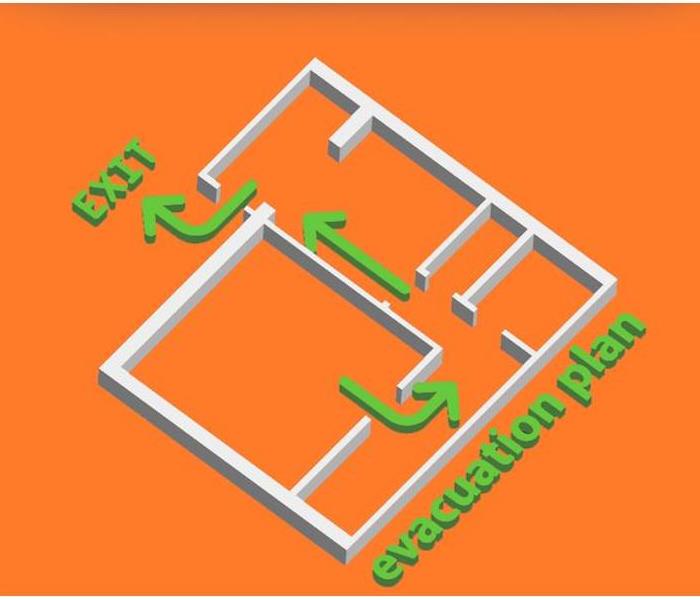 A fire drill or evacuation plan is as essential to your Seattle, WA business as insurance or an emergency restoration service at hand.
A fire drill or evacuation plan is as essential to your Seattle, WA business as insurance or an emergency restoration service at hand.
Three Points to Consider When Planning Business Evacuation Drills
A fire drill or evacuation plan is as essential to your Seattle, WA business as insurance or an emergency restoration service at hand. It helps your employees make decisions that protect them. It is also a multilayered operation that must consider multiple factors and the perspectives of everyone in the work team. These tips can help you create a thoughtful and successful plan.
1. Consider Multiple Perspectives
Since your team works in different parts of your establishment, they will all have varying experiences when performing a drill. Some employees might have an easier time escaping via a specific route than others. Include representatives from each department to agree on a drill plan that benefits everyone. Additionally, employees with special needs might need additional assistance when evacuating, such as breathing equipment, wheelchair-accessible exits, and designated helpers. Ensure these resources are available to anyone who needs them.
2. Establish Clear Communication
Staff and clients need to act fast during a dangerous situation, so it is important to communicate fire drill directions clearly. The best way to direct evacuees towards safe locations is by placing signage that points towards the correct path and the eventual exit, in addition to alternatives if the main exit is blocked. Communicate these routes and practice them with the workers until they memorize them. Teach your employees other useful skills such as guiding others during evacuation, using a fire extinguisher, and reporting an incident.
3. Pace the Frequency of the Drills
Evacuation practices are meant to prepare your team against any emergency. While you might want to practice often, this decision can actually backfire. Excessively frequent drills can cause your workers to become complacent or bored. Also, you need time to identify potential areas of improvement and implement changes. Arrange for a healthy mix of announced and surprise drills.
Organizing a fire drill or any other evacuation preparation can be overwhelmingly complex, but it is necessary to keep your staff safe. Practices such as these can help you plan more effectively.
Create a Maintenance Plan for Your Building Exterior
4/4/2022 (Permalink)
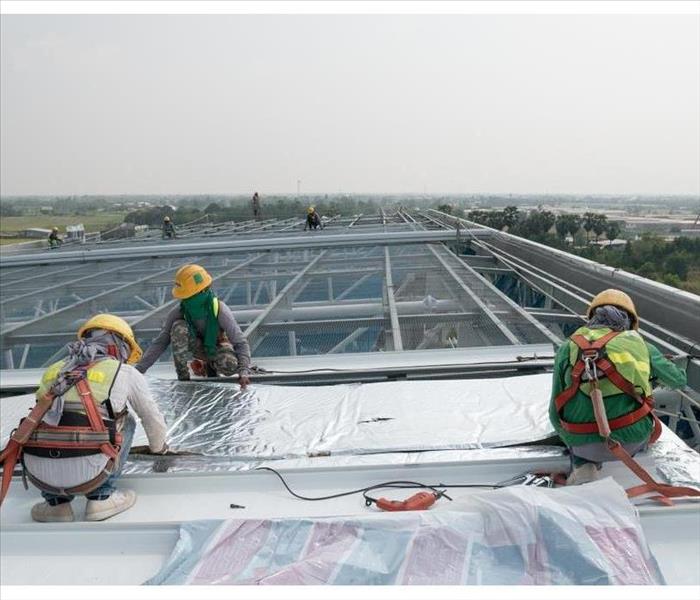 To reduce the risk of storm damage to your building, implement an exterior maintenance plan.
To reduce the risk of storm damage to your building, implement an exterior maintenance plan.
Make A Building Exterior Maintenance Plan.
It is important to set up a routine maintenance plan for your commercial building. Not only will it keep your property looking great, but proper exterior maintenance protects your building from storm damage as well.
There are many areas on the outside of your building that should be checked frequently.
1. Roofing Inspection
Your roof is the most exposed part of the building, which makes it prone to damages during heavy winds and rainstorms. Inspect the roofing materials routinely and after a storm. Missing or damaged pieces should be replaced as soon as possible.
Inspect the gutters and drains for leaves and debris which can clog the drainage system, causing water to pool. Make sure skylights and HVAC equipment are protected from the elements.
2. Window and Building Caulking
To keep your building maintained before winter arrives in Wallingford, WA, check the caulking around the windows and doors to make sure there are no gaps around the frames. If the caulking has dried out, remove it and fill the space with fresh caulk. Be sure to caulk both the inside and outside of each window.
Your building inspection should also include checking the exterior of the building. Seal any cracks or gaps in the brick and cement. Inspect the foundation as well.
3. Landscape Upkeep
Landscape inspections should be a part of your exterior maintenance plan. Check for areas that are prone to flooding and look for pooled water from the irrigation system. Make sure all sprinkler heads are in good condition and replace any damaged units.
Keep trees and bushes trimmed frequently. During a storm, loose branches can break off and damage the building and break windows. Lay down mulch and keep landscaped areas weeded regularly. If your building sustains water damage during a storm, contact a water restoration service right away.
Implement an exterior maintenance plan to reduce the risk of storm damage to your building.
How Do I Know if My Business Needs Flood Insurance?
3/30/2022 (Permalink)
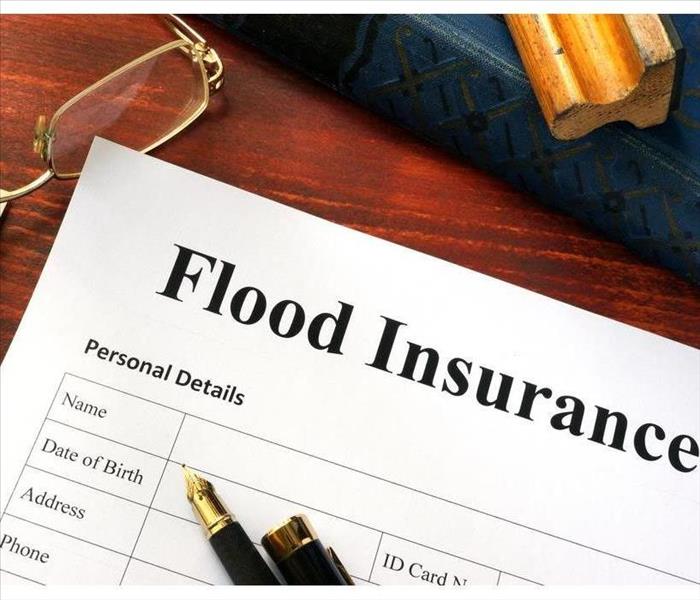 As a business owner in, you need to make sure you have the right coverage for your property when storms or other natural disasters hit your area.
As a business owner in, you need to make sure you have the right coverage for your property when storms or other natural disasters hit your area.
How Do I Determine Whether My Company Requires Flood Insurance?
As a business owner in Seattle, WA, you need to make sure you have the right coverage for your property when storms or other natural disasters hit your area. Not all water damage is covered under a standard policy, so it's important to know whether you need separate flood insurance. You don't want to wait until your property has already sustained water damage to find out what your coverage includes.
Standard Policy
A standard commercial insurance policy usually covers water damage that happens:
- As a result of storms, such as wind damage, rain, hail, or lightning
- As a result of broken pipes or plumbing failures
However, most standard plans do not cover water damage that the insurance company determines to be caused by neglect:
- slow roof leaks
- slow plumbing leaks or groundwater seepage.
These are maintenance issues that fall under the owner's liability. If damage happens suddenly due to a storm or burst pipe, those claims are usually covered. Check with your agent to find out what is included in your policy, as each business is different and insurance coverage varies by company.
Federally-Mandated Flood Insurance
If your property sits on a known flood zone, the government requires you to have a separate flood insurance policy; usually, if that's the case, you would have purchased a policy when you were given a mortgage.
Separate Riders
Many insurance companies allow you to purchase separate riders to cover water or sewer damage not included in a regular policy or mandated by the government. Flooding can happen from storm surges, melting ice and snow, water main breaks, or the overflow of lakes, rivers and streams. Sewer damage is only covered through a rider of its own. Your agent can help you determine whether your risk is worth the expense of these extra policies.
It pays to be prepared and knowledgeable about your coverage before your building or its contents ever sustains water damage. A good flood insurance policy will not only cover the loss but also the cost of cleanup and remediation, saving you thousands of dollars and an enormous amount of stress.
How to Keep Working When the Lights Go Out
11/19/2021 (Permalink)
 A power outage doesn't have to mean that your business comes to a halt, but if you experience damage from a storm, SERVPRO can help you!
A power outage doesn't have to mean that your business comes to a halt, but if you experience damage from a storm, SERVPRO can help you!
How To Continue Working Even When the Lights Go Out
Weather can have a huge impact on your business. Hurricanes, tornadoes, and blizzards can spell disaster for anyone. Even if your business doesn’t take a direct hit, it may still be affected by inclement weather. For example, what do you do if there is a power outage in Wallingford, WA? Here are a few tips in the event you lose power due to a natural disaster.
1. Decide what is essential and turn everything else off. If you have a portable generator to keep you up and running, that’s great, but that’s going to cost you fuel to run. Conserve fuel by turning off what you don’t absolutely need, such as decorative lighting or extra work stations. Conservation is key during times of emergency and disaster.
2. Keep the generator outdoors. This cannot be stressed enough. Read the owner’s manuals for any generators you are using and pay careful attention to all safety instructions. A power outage can be inconvenient and annoying, but improper use of a portable generator can be downright dangerous – even fatal. Don’t risk it.
3. Determine if work can be done from home. It will depend on what type of business you’re in, but if it is possible for some of your staff to work from home (assuming that they have power), you may need to ask them to do so temporarily. This may be easier for some departments than others, but whatever you and your team can do to keep things running smoothly will be helpful.
A natural disaster can be disastrous for business, but these tips can help you minimize your lost time and profits. If you are lucky enough to not lose power, it can be a nice gesture towards the community if you use your good fortune to help out others, too. A power outage doesn’t have to mean that your business comes to a halt, but if you experience damage from a storm, companies that specialize in restoration can help get your business back up to speed.
How To Clean Your Home After a Flood
10/4/2021 (Permalink)
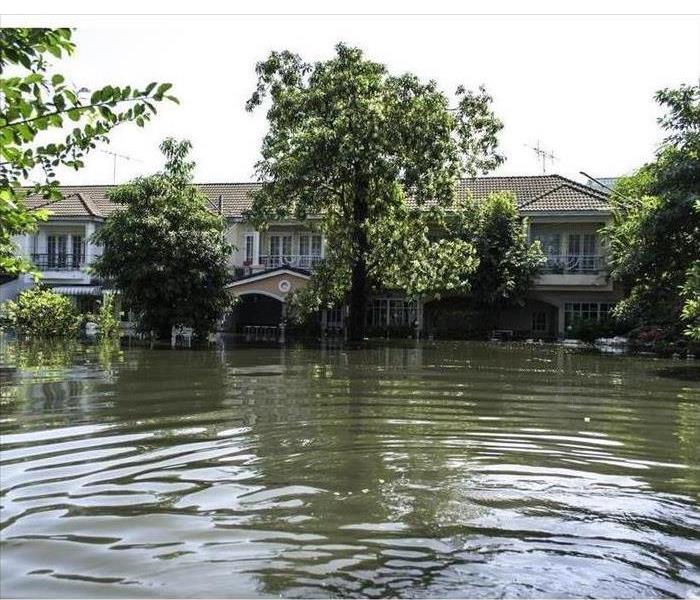 A flooded home in Seattle, WA.
A flooded home in Seattle, WA.
Cleaning Requirements to Follow After a Flood
After a flood in Seattle, WA, cleaning up the damage to your home can seem like an overwhelming task. Thankfully, there are storm damage restoration experts who can make the process go more smoothly. In fact, there are certain items that should only be cleaned by professionals, including:
- Upholstered furniture
- Washing Machines
- Televisions
- Dryers
- Dishwashers
- Radios
- Vacuum cleaners
Still, there are some steps you can take to restore your home before professional assistance arrives. If you do want to do some tidying up after a storm, there are some cleaning requirements you should follow.
Disinfect Surfaces
To prevent germs from spreading throughout your flooded home, you should use a strong cleaner to wipe down every surface of your home. Then, apply a powerful disinfectant to each area. The EPA has a list of registered disinfectants that you can use.
You can even make your own flood disinfectant using a quarter cup of bleach for every gallon of water. Make sure to apply a bleach solution to your kitchen counters and cupboards before returning your dishes to those areas. Any contaminated items should be removed from the home as soon as possible.
Kitchen Cleaning Requirements
As part of your flood clean, you also need to disinfect any metal items in your kitchen, including pots, pans and silverware. However, chlorine bleach can cause metals to darken. You should thus clean these objects by placing them in boiling water for 10 minutes. Meanwhile, glass, china or porcelain dinnerware should be placed in a solution that has two tablespoons of bleach for every gallon of hot water.
Freeze Certain Valuables
After a flood, wipe the mud off important books or photographs and place them a frost-free freezer to prevent the growth of mildew. You can then thaw and clean them at a later date.
Follow these above cleaning requirements to preserve your belongings after a flood. Clean what you can, but leave the big projects to restoration professionals.
Coping in the Immediate Aftermath of a Storm
7/28/2021 (Permalink)
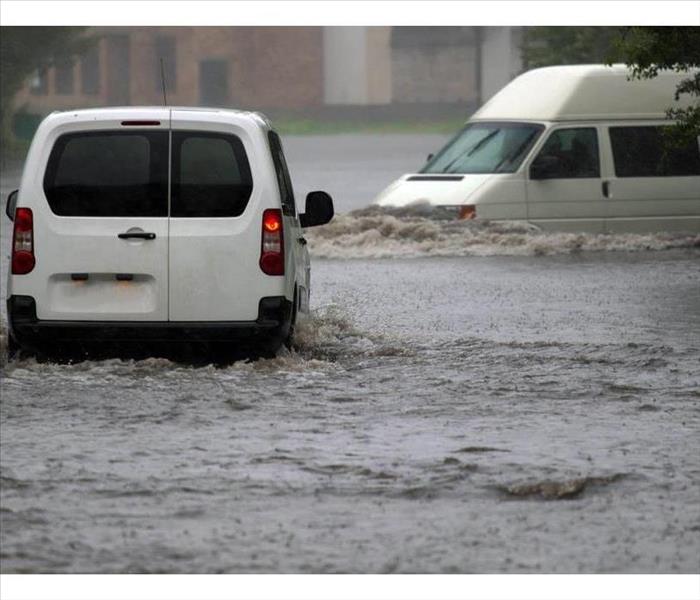 Avoid driving in flooded streets
Avoid driving in flooded streets
Storm Tips
People who live in Wallingford, WA, are no strangers to the destructive power of storms, whether it is high wind, precipitation or flooding. However, a few storm tips about what to do while waiting for help to arrive can be helpful to even the most seasoned storm veteran.
Safety Is the First Priority
• Summon help for any medical emergencies.
• Stay calm. Determine if anyone needs assistance and help if you can.
• Be sure the storm event has abated before checking surroundings for storm damage.
• Listen for official instructions on local radio, television, or internet news sources.
• Avoid driving so that roads remain clear for rescue personnel.
• Keep track of children; flooding, in particular, can remain treacherous for some time.
• Keep clear of moving water, downed power lines and compromised trees and structures; effective storm tips include perils of the aftermath.
• Follow official directions regarding evacuation or travel.
• Understand that a response for services will take time. Avoid repeated phone calls as others may also be seeking help.
• Contact your home insurance company to report damage and schedule an appointment for an adjuster’s inspection.
Securing Your Home Comes Next
Wait for an insurance adjuster to arrive to accurately record the extent of storm damage to your home and belongings. It may be necessary to secure your home from further loss or damage. Tarps or plywood can be put in place to prevent water damage, for instance. However, don’t begin repairs until your insurance company gets a full report from the adjuster.
There is a certain level of excitement and adrenaline rush attached to storm activity, and emotions can run high. However, a healthy amount of respect for the power and unpredictability of nature is in order. Heed storm tips and share them with your family, friends, and neighbors. Repairing the damage will happen soon enough, and help will be available.
3 Reasons Why Your Business Should Purchase a Flood Insurance Policy
6/1/2021 (Permalink)
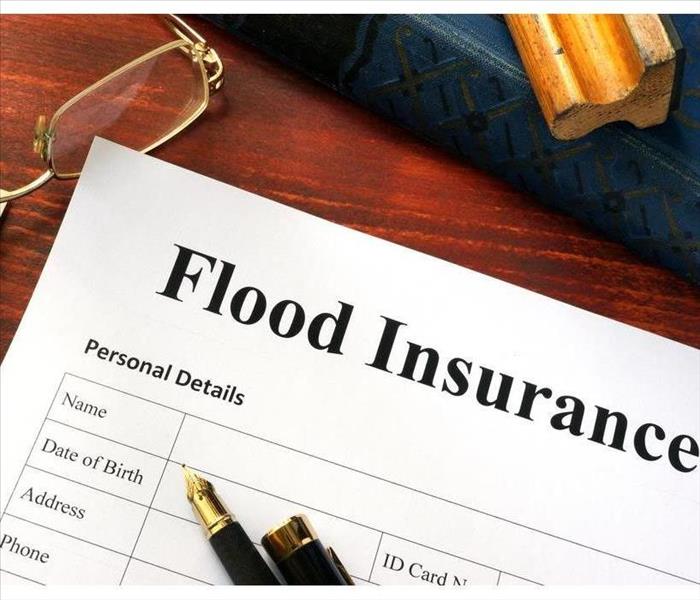 It is often a good idea for your business to purchase additional flood insurance.
It is often a good idea for your business to purchase additional flood insurance.
Reasons To Purchase Flood Insurance
If you own a business in North Beach, WA, you probably already have some kind of commercial insurance. However, your policy might not cover everything. Buying additional flood coverage might add to your company’s expenses, but it is often a good idea anyway. The following are some reasons why.
1. It May Be a Requirement
Sometimes, flood insurance is a requirement rather than an option. If you are located in an area that experiences flooding often, then this will probably be the case for you. It is required to purchase this extra coverage if you have a mortgage with an insured or federally regulated lender.
2. Flooding is Likely Not Included in Your Basic Insurance Plan
Even if you are not required to buy additional coverage, you may want to do so anyway. This is because flooding is usually not included with basic commercial insurance. In the event of a flood, your building could experience severe damage that will not be included in your insurance claim. This type of insurance can be helpful even in areas that do not have a high risk of flooding since the weather can be unpredictable.
3. Restoration Can Be Expensive
Without flood insurance, you will have to pay for any flood damage on your own. Because this kind of damage can be extensive and may affect many areas of your building, the cost of repairs can be high. Restoration after a flood can include rebuilding certain parts of the building, repairing or replacing damaged furniture and electronics, and removing mold growth. If you do not have coverage, this work can have a big financial impact on your business.
Because your basic insurance does not likely include floods, it is often a good idea for your business to purchase additional flood insurance. This will be a huge help if you need to hire a water damage remediation company to make repairs after a flood. Otherwise, you may be stuck paying the bill out of your company’s funds.
3 Ways to Mitigate Wind Damage
4/9/2021 (Permalink)
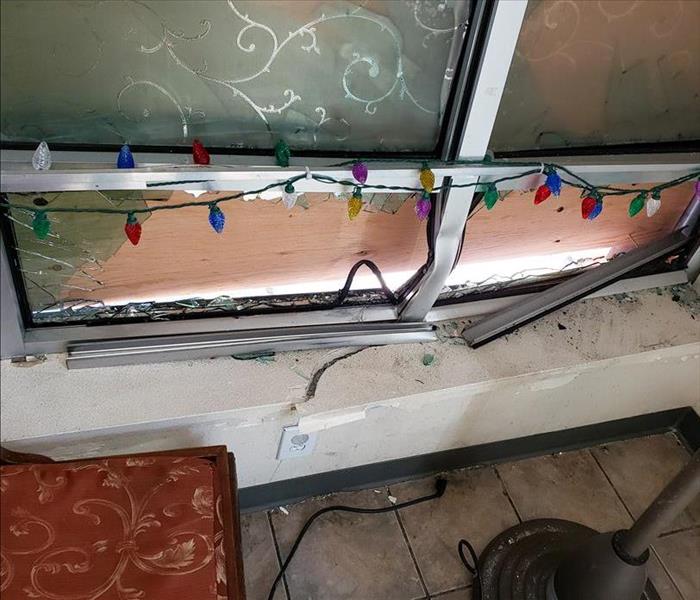 Commercial storm damage.
Commercial storm damage.
Three Ways To Limit Wind Damage
Damage caused by wind can occur alongside storm damage or separately due to strong gusts. In the worst-case scenario, wind damage to the roof, windows or any other part of a commercial structure could result in a roof leak or expose the interior. Here are three ways to limit wind damage to the exterior and interior of a commercial building located in Wallingford, WA.
1. Inspect a Structure for Wind Damage
After a windstorm subsides, the owner or manager of a commercial building can identify several signs of damage. Missing shingles may be evident on a pitched roof or on the ground. It may also be helpful to go up on the roof or arrange for a professional roof inspection after windy weather.
2. Board Up or Tarp Over Breaches
Any breaches in a structure should be covered. While missing roofing materials may lead to a roof leak, a broken window or damaged door can leave a building open to the intrusion of flying debris, rain or trespassers. Board up accessible openings in a building or use tarps and anchor boards to prevent rain from penetrating into damaged roofing until repairs take place.
3. Restore Damage As Soon As Possible
It is a good idea to repair a damaged roof or other types of damage caused by wind sooner rather than later. Even if high winds are expected to continue, a well-maintained or recently repaired structure may be less susceptible to repeated damage, whereas a structure that has already sustained damage may suffer more severe storm damage.
High winds can cause a roof leak and damage the enclosure of a commercial building in Wallingford, WA. If loose flashing or the failure of a window or door compromises any part of a structure, storm damage restoration will be necessary to address external problems that expose a building interior to storm damage.
Protecting Your Seattle Northwest Home from Storm and Water Damage
3/30/2021 (Permalink)
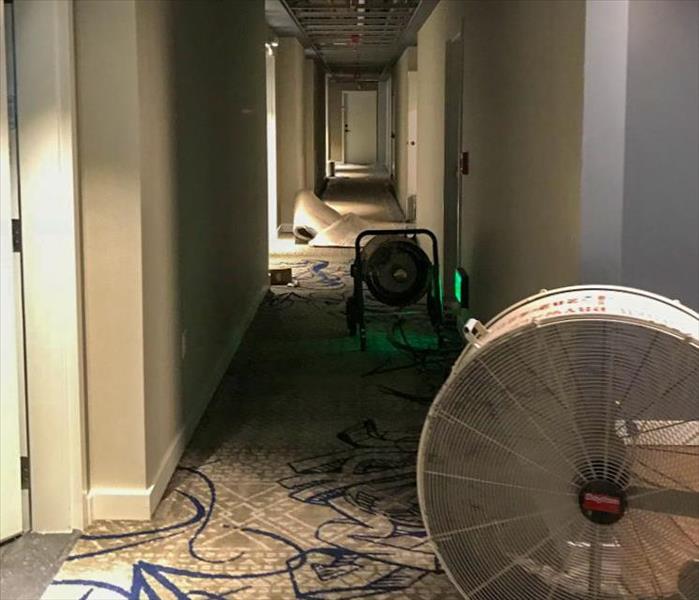 From ceiling fixture leaks to flooding after natural disaster, SERVPRO is here to help.
From ceiling fixture leaks to flooding after natural disaster, SERVPRO is here to help.
Flooding in your home can happen at any time, but your home can be even more exposed to water damage when it rains. As we move into the late Winter and early Spring months here in Seattle, storm damage can become more of a threat to your property. Follow these tips to help protect your home from water damage during the next rain storm.
- Modify your homes water valves. If the city's main sewer line gets backed up during a heavy rain storm, you could find yourself standing in a a puddle of you-know-what. You may want to consider installing an interior or exterior backflow valve. Backflow valves prevent your water system from being contaminated from water flowing backwards into your supply lines.
- Clear gutter, drains, and downspouts. Clogged gutters and downspouts can end up in a messy flood. Take the time to clean them and clear them of all debris before the rain comes.
- Cover air vents. One of the most common ways water finds its way into a home is through the home's air vents. If you know that heavy rain is in the forecast and that you are at risk of flooding, cover your air vents with thick plastic sheeting from both the outside and the inside.
- Check your sealant surrounding doors and windows. Make sure that any gaps or holes in the sealant surrounding the doors and windows are filled in. This will help stop rain water from finding its way into your home.
If water still manages to find a way into your home and you need assistance for water/mold clean up & restoration, give SERVPRO of Seattle Northwest a call at (206) 789-2300
We're available 24/7 for emergency services.
Rain Storms and Gutter Maintenance
3/24/2021 (Permalink)
It's the beginning of the rainy season here in the Pacific Northwest, and SERVPRO of Seattle Northwest is here for you!
Preventative maintenance is the best way to prepare for the wind and rain storms that are heading our way.
Gutters help catch rainfall and ensure it stays away from the foundation of your home. If your gutters get clogged with ice or debris that piles up during the season, your gutters can't do their jobs. We all know there are giant leaves EVERYWHERE right now, so just make sure they don't stay in your gutters.
Clean your gutters by spraying a hose through them from the bottom up. Use a scoop or towel to remove any clogs in your gutters, or you can purchase a hose attachment tool that is specifically designed for cleaning gutters.
It is crutial that you check your home for signs of leakage. Fixing a leak early on can prevent flooding, mold, mildew and even a collapsed ceiling. Scan your ceilings for water marks and look for peeling paint.
You should also check the outside of your home for any telltale signs of leakage.
Make sure there are no cracks in the ridges of your roof. Wind can cause roof damage, so keep an eye out for loose, curled, or missing shingles. If you do have roof damage, water can enter your home.
Cleaning your gutters is a quick and easy way to protect yourself from the harsh weather heading our way!
An ounce of prevention can save you from having gallons of water inside your Seattle home!
Prepare Your Home For A Wind Storm: Top 6 Ways To Protect Your Home!
3/16/2021 (Permalink)
Top 6 Ways To Protect Your Home From Wind Damage In the Seattle Northwest
Wind storms can be very damaging to your home or property if you are not prepared. Unfortunately, we rarely get much warning before a large wind storm so it is critical to prepare your home ahead of time. Routinely checking, fixing or updating areas around your home can make the difference between a hundred dollars and thousands of dollars in damages.
Here are six ways to prepare your home before the next storm hits Seattle:
- Is your roof in good shape?
- Your shingles should be nailed down properly and all secured together.
- Replace any missing shingles immediately.
- Make sure your garage door is secure.
- Sometimes this means hiring a company to inspect your garage door to ensure it is properly secured and functioning well.
- Secure all outdoor items.
- Grills, patio furniture, trampolines, etc. These items can cause a lot of damage if the wind is strong enough to pick them up.
- Ensure your gutters are properly secured and clean them out regularly.
- Clogged cutters can create water damage to your house. They are also more likely to break in a high wind storm if they are weakened by heavy debris.
- Are your windows storm proof?
- Installing storm proof windows can make a big difference in protecting your home from high winds and hail from a storm.
- If you don’t have storm proof windows, consider installing steel or aluminum shutters on your windows or sliding doors to protect them from flying debris.
- Remove or trim/maintain trees around your home.
- Trimming your trees of dead wood can help prevent large branches falling during a wind storm.
Be sure to routinely check and maintain your home so you are ready before the next storm hits the north west. However, if you do find yourself in need of help after a storm, call SERVPRO of Seattle Northwest. We specialize in restoration and water damage repair in the Seattle Northwest area. Call us after a storm and let us take the stress off of your family! We will make sure it's "Like it never even happened."
Tips on Conducting a Fire Drill at the Office
3/30/2020 (Permalink)
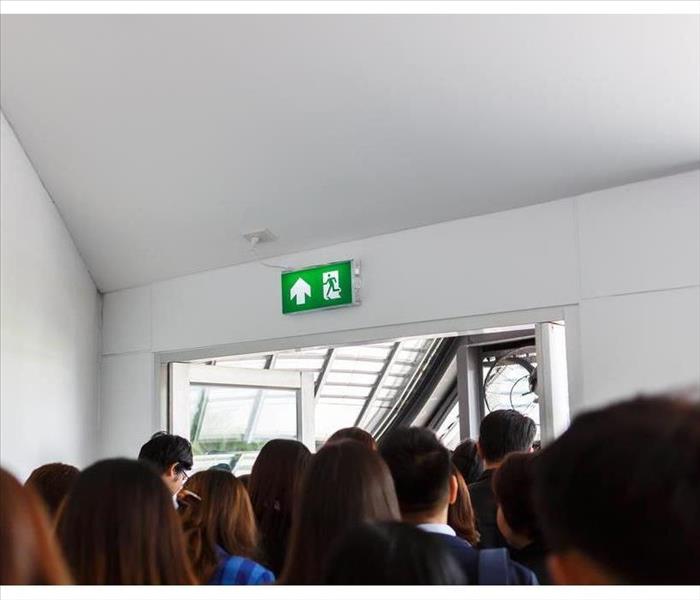 Practicing a fire drill can help keep everyone safe during a fire or storm
Practicing a fire drill can help keep everyone safe during a fire or storm
One of the best ways to protect your employees and facility in Greenlake, WA, when an emergency arises is adequate preparation. If you design and practice a plan with all staff members, it will help keep them safe. Conducting a fire drill also identifies any problems that need to be remedied, such as blocked exits or faulty alarms.
Prepare Your Emergency Evacuation Plan
Before conducting a drill, you need to create a comprehensive written plan with the help of an assigned safety team. Your plan should include several important considerations:
Assign a person to account for each employee. Depending on the size of your company, you may need several people to fulfill this role, including a backup person in case one of the others is absent.
Designate the preferred exit routes for employees. If your company is large, you may have different exits for different departments. It is important to stress that if the alarm sounds, choose the closest exit even if it isn’t the designated one.
Decide how to alert all employees about the drill, such as using an alarm system, paging system or other means of communication. Make sure the system you choose is accessible to all employees.
Conduct the Drill
Before conducting the fire drill, have training sessions with all employees to go over the exit routes, the meeting place outside and the person to whom they report.
Always alert your local fire department before you pull an alarm so they are aware of the drill.
Once the alarm is activated, start a timer. Have each designated person accountable for their group. Once everyone is accounted for outside, stop the timer and assess how long the drill took.
Assess the Results
Review the results of the drill with your safety team to identify any weaknesses in the plan. Continue to practice until you are satisfied with the response time.
Preparing an emergency plan, communicating it to employees and practicing a fire drill can help keep everyone safe during a fire or storm. If an unexpected event does occur, contact a commercial cleanup and restoration service to quickly get the business back to normal.
How To Prepare Your Business for a Snowstorm
1/6/2020 (Permalink)
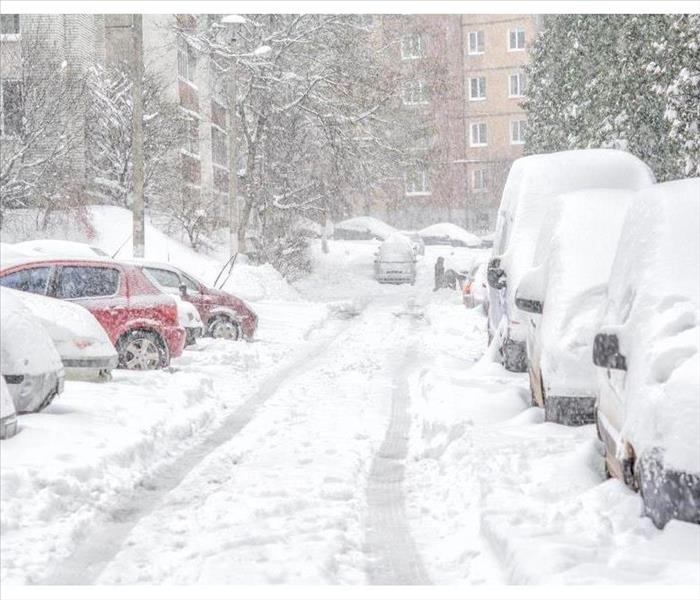 Snowstorm in Ballard, WA
Snowstorm in Ballard, WA
Simple Ways To Prepare for an Upcoming Snowstorm
The winter season brings frigid temperatures, high winds, and severe weather. If your business in Ballard, WA, is gearing up for a big winter storm, it’s crucial to ensure that you’re properly prepared for the event. Equipping your business for inclement weather can boost your reputation and prevent you from losing customers. Here are some simple ways to prepare for an upcoming snowstorm.
Form a Plan
To keep your business running smoothly during a winter storm, you need to know exactly what to do once the snow hits. Be sure to keep the following factors in mind while you form your plan:
- Emergency supply kit
- A safe place to store important documents
- Arrangements for professional snow removal
By taking each of these steps, you can provide your business with an extra layer of security. Make sure that you consider all the possible threats you may face during a storm to keep yourself safe under any circumstances.
Communicate Effectively
A good plan can only be successful if you communicate it to your employees before the snowstorm. Make sure that all of your contact information is accurate and up to date, and send out an email to all of your workers that clearly illustrates your emergency plan. In addition, confirm that you have a way to notify customers of any updates so that they know what to expect during the storm.
Check for Existing Problems
A winter storm can have many devastating effects on your business. If there are any problems in your building that haven’t yet been addressed, they can become even more vulnerable to the bad weather. Make sure you thoroughly inspect your property for any existing issues, such as a pipe burst or a damaged HVAC system, and resolve them before the storm hits.
Preparing for a snowstorm is crucial to the safety of your business. If you happen to run into any problems despite your best efforts, be sure to contact commercial building restoration services as soon as possible.
FAQs About Solar Panels and Storms
11/13/2019 (Permalink)
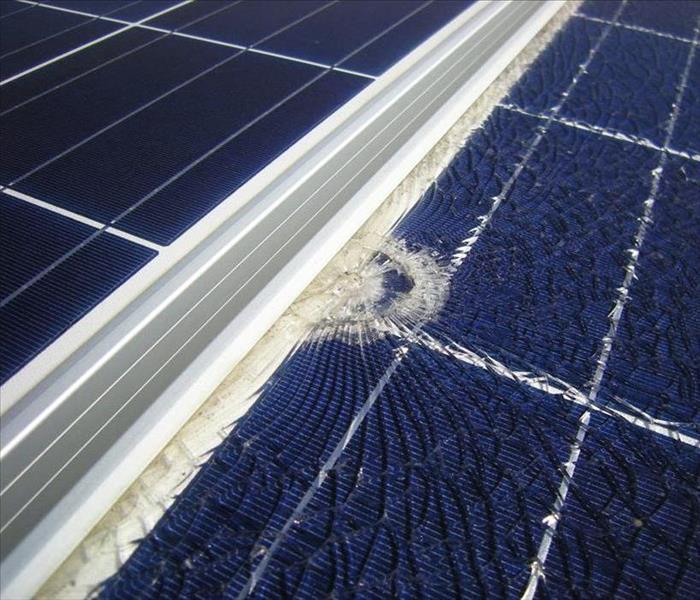 Broken solar panel in a North Beach, WA home
Broken solar panel in a North Beach, WA home
FAQs About Solar Panels and Storms
The use of solar panels is becoming increasingly popular for homeowners in North Beach, WA. However, many homeowners are unsure about panel damage that may occur during a storm. If you have or are considering installing panels, it can be useful to know what they can withstand during a storm.
What Are Common Types of Damage to Panels?
Panels are often more durable than traditional roofing options. However, panels may still sustain damage in a storm, and this can ultimately result in damage to your home. Homeowners whose houses have sustained storm damage may find it helpful to contact emergency restoration services. Common types of damage from a storm may include:
- Leaks as a result of long-term water damage
- Scratches from large tree limbs, which can limit the amount of energy panels can take in and put out
- Malfunctions due to a lightning strike
Can Panels Handle Hail?
For many homeowners, hail is a common concern when it comes to panel damage. However, the majority of solar panels made today are constructed to withstand the impact of hail. In general, repeated strikes in the same spot are necessary for hail to damage a panel. If you live in an area that is prone to hailstorms, it can be useful to research the strength of several different types of panels prior to purchase and installation.
How Can You Prevent Damage to Your Panels?
Although you can't prevent a storm, there are steps you can take to reduce the likelihood of roof damage with your panels. Strategically placing a lightning rod on the top of your house, in an area that isn't touching or covering the panels, can help to redirect a lightning strike, which can ultimately prevent damage. Additionally, cutting dead limbs and trimming healthy tree limbs can reduce the chance of damage to your panels.
Panel damage can be a costly and frustrating issue to deal with after a storm occurs. However, knowing the types of damage that may occur to your panels during a storm, what panels can withstand and how to prevent damage to your panels can help you to prepare for the effects of a storm.
Flood Insurance Requirements for Businesses
10/24/2019 (Permalink)
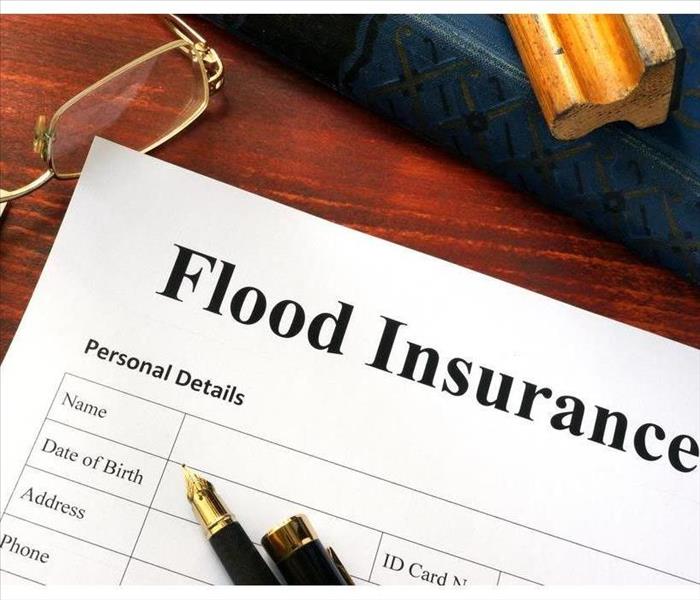 The storm surge of a hurricane, an overflowing river and spring runoff are all flood insurance events
The storm surge of a hurricane, an overflowing river and spring runoff are all flood insurance events
Flood Insurance Requirements for Businesses
The next time you get together with a group of business acquaintances, casually ask for some advice about flood insurance. You may be surprised at how many different answers you get. You will learn that some:
- Have it but don’t understand it;
- Have heard of it but don’t have it; or
- Have never heard of it.
Some Floods Require Separate Insurance
Floodwater that comes inside from an outside source requires a separate policy. The storm surge of a hurricane, an overflowing river and spring runoff are all flood insurance events. This policy is different from a commercial insurance policy which would address water damage from a plumbing flood.
You Should Determine If the Business Is in a Flood Zone
Some places are more susceptible to floods than others. If your business is located along a river or near the shore, the business is probably in a flood zone. Even if it isn’t, it’s a good idea to find out for sure from the City Engineering Department.
Federal Lenders Don’t Take Unnecessary Risks
In many cases, businesses encounter problems and file for bankruptcy. Bankruptcy leaves creditors, including the mortgage lenders, with a loss. The risk is greater than average when the business is in a flood zone. Therefore, federally regulated and insured lenders require their business customers to have a separate policy for floods. This policy guarantees reimbursement when a flood occurs.
Other Parties Might Require a Separate Flood Policy
Nobody likes to lose money in a disaster. Depending on the organization of the business, there may be other parties who might require a separate insurance policy. They are:
- Lessors who own equipment leased to the business;
- Vendors or customers who own inventory stored on the property; and
- Mortgage lenders or other creditors not covered by the federal government requirement.
Recovery Starts After the Water Recedes
The approval of the flood insurance claim marks the beginning of the recovery. There are flood disaster recovery specialists located in the Ballard, WA, area who are ready to start work. They are a phone call away.
When Is a Flood Cut Needed?
9/13/2019 (Permalink)
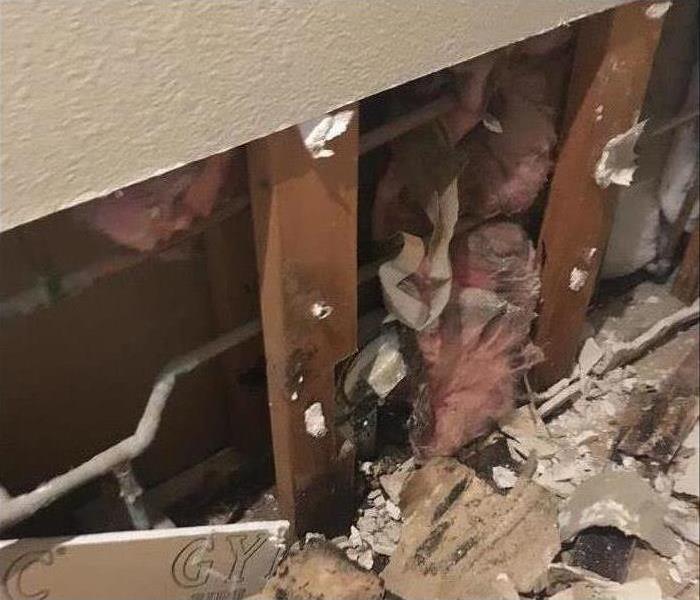 If your home is damaged by flooding, the best bet is to use a flood cut
If your home is damaged by flooding, the best bet is to use a flood cut
When your home in Fremont, WA has water damage, the cleanup process is typically fairly easy. If the damage was caused by flooding, it unfortunately brings a few extra woes. As opposed to a pipe leak with clean water, flood waters can easily pick up extra bacteria and contaminants along its path.
Purpose of a Flood Cut
Since water wicks its way up, the visible damage seen at a few inches could actually have traveled a few feet up a wall. A flood cut allows for the assessment of damage further up the wall. Typically 12 to 18 inches above the visible damage, this cut can help determine how far the water has moved up as well as any other damage.
Are Flood Cuts Always Necessary?
Most professional mediation experts try to tear out as little drywall as possible. For clean water leaks, only the visibly damaged area may need to be removed to prevent further moisture damage. Unfortunately, flood waters require extra care, which will likely mean a flood cut for three main reasons:
After flooding, there is a good chance of contamination. Sewage, chemicals and other bacteria can easily picked up in the flowing waters.
The excess water that has likely worked its way up the walls can create a welcoming environment for mold growth. Even though it may not be visible, the moisture and organic materials in drywall and other materials create the nourishment the fungus needs to flourish.
Behind the drywall in many homes is insulation, which can’t be properly dried. If left as is, it will no longer provide its designated insulated properties.
If your home is damaged by flooding, the best bet is to use a flood cut. This will help you determine how much of the material needs to be removed, as well as will help the area dry out better. Luckily, helps is available that is Faster to any size disaster to resolve the residual flood issues.
Deductible Storm Damage
8/30/2019 (Permalink)
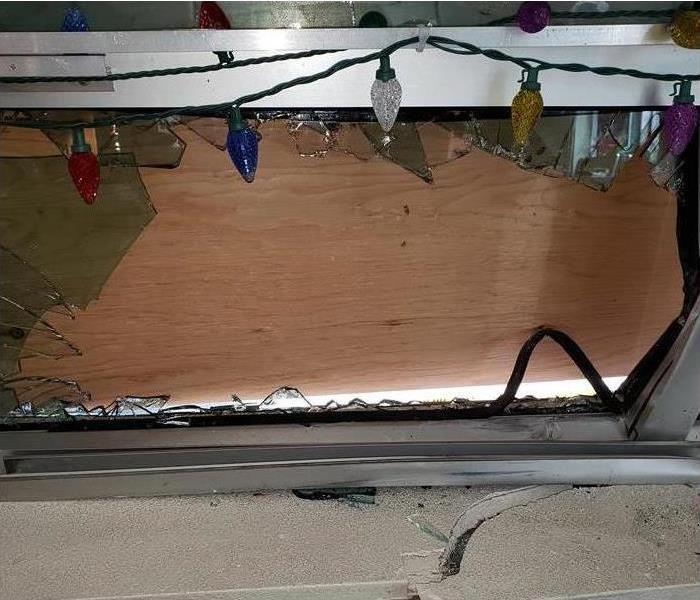 Commercial storm damage in Haller Beach, WA
Commercial storm damage in Haller Beach, WA
Deductible Storm Damage
While most businesses have commercial insurance policies, the coverage received after making a claim may not be enough to mitigate all expenses. Therefore, when a company incurs extensive storm damage, owners might be wondering what is tax deductible and what is not. Thankfully, as long as an owner makes a claim on their commercial policy, they can claim the rest of their financial losses on their taxes. However, when it comes to specific deductions, there are at least four types.
1. Restoration Work
Storm restoration specialists in the Haller Beach, WA, area are necessary, but their services may not be cheap. While a commercial policy may cover a significant portion of the property's restoration, the rest will need to be paid out-of-pocket by the property owner. However, this out-of-pocket expense can likely be deducted from a business's taxes come year-end.
2. Water Damage
Water damage is a common problem after a storm. There can be leaks that develop in the roofline or even around windows and doorways. While this type of storm damage is common, and many commercial policies cover certain losses caused by it, there are instances where commercial plans won't kick in. For example, if there is a flood. Thankfully, if your commercial policy does not kick in, you might be able to deduct the expenses.
3. Wind Damage
Wind damage typically results in roof damage, but it can wreak havoc on landscaping and glass. Many commercial policies cover this type of loss because of the universality of it. However, depending on your deductible with your insurer, your coverage may not be enough, requiring extra relief through tax deductions.
4. Other
There are other instances where your insurer may not provide coverage, but the affected area is included in on a presidential declaration of a national emergency. When this happens, you can use the declaration as a way to get tax relief when it is time to file.
Storm damage can present a significant expense to businesses and commercial property owners. Thankfully, you can find some relief in tax deduction at year-end. Therefore, don't hesitate to hire and ask for help in breathing life back into your operations.




 24/7 Emergency Service
24/7 Emergency Service














